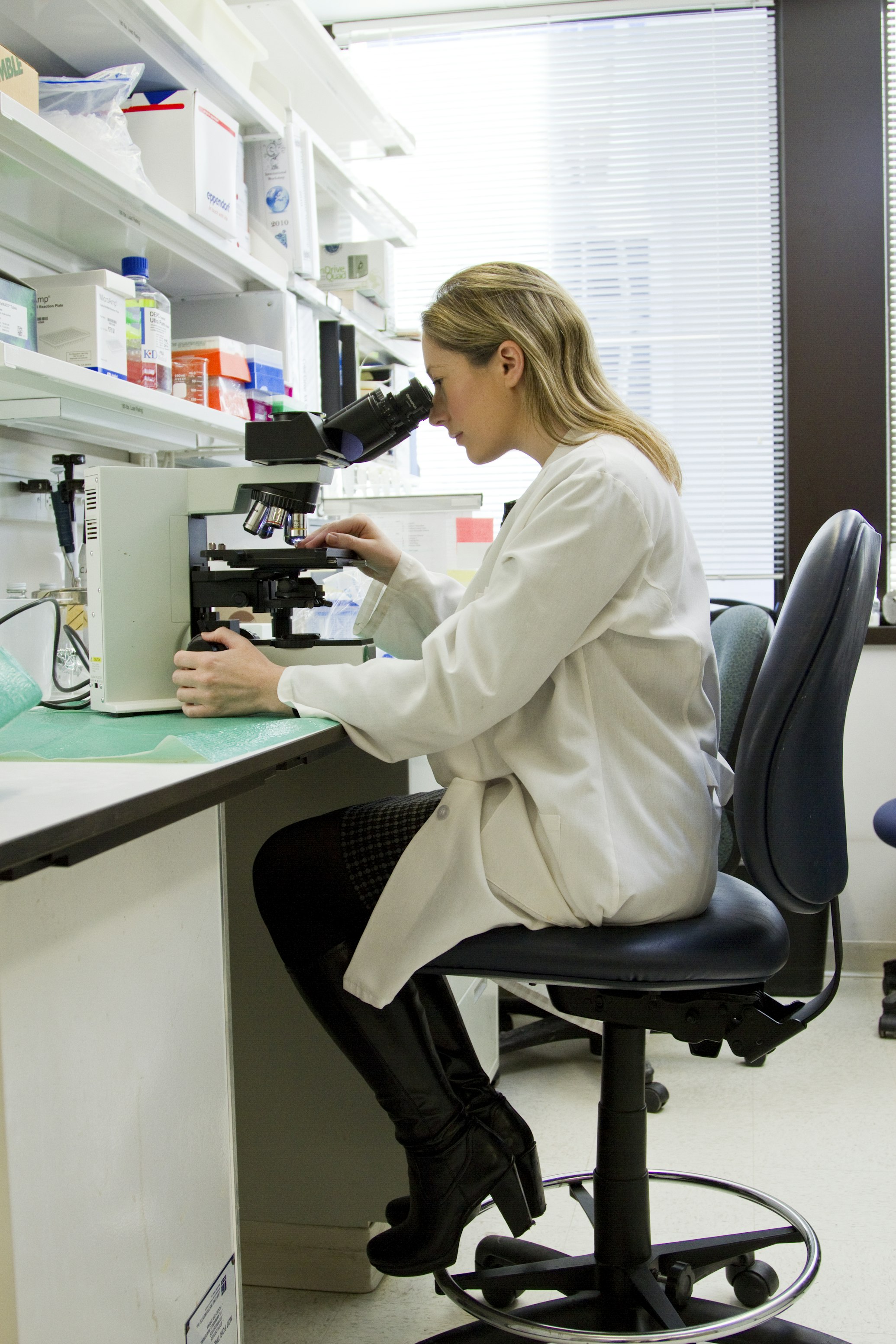If you're a biotech founder tired of the long VC treadmill, there's a practical alternative: a direct path to public markets that turns rigorous research, platform innovation, or small molecule development into the capital needed to advance therapies. Our advisor specializes in guiding companies to NASDAQ, even at early stages, by packaging compelling science, credible teams, and clear market narratives into investor-ready offerings.
Led by Aaron Tsai, a seasoned advisor with a reputation for taking companies public through unconventional routes, who help founders assess whether a biotech IPO is the right route for their company, whether you're building a precision medicines platform, advancing small molecule therapies, or progressing discovery-stage programs toward clinical development.
Ready to see if your company qualifies? Book a short eligibility call and get a candid assessment of timing, costs, and next steps for pursuing a biotech IPO:
Book Eligibility CallThe NASDAQ Window Is Wide Open for Biotech

"NASDAQ allows companies at many stages to pursue an initial public offering, regardless of whether you have revenue," Tsai explains. That flexibility makes a biotech IPO an attractive route for companies whose strength lies in science, platform innovation, or promising small molecule development rather than current sales. Public markets will pay for differentiated research and a credible team — not just top-line price metrics.
Practically speaking, NASDAQ listing pathways have been clarified in recent rule updates that allow companies to meet the Market Value of Unrestricted Publicly Held Shares test based on offering proceeds. In many cases, founders can target a minimum raise on the order of $15 million to satisfy listing thresholds — a realistic initial public offering price point for a well-packaged biotech company. For example, a $15M offering structured as a primary raise could leave sufficient runway to complete key development milestones while minimizing founder dilution.
Curious whether your company can meet NASDAQ criteria or what an initial IPO price might look like for your offering? Schedule a brief eligibility call — we'll review your development stage, platform strengths, and likely pricing range so you can decide whether to pursue going public or remain on a private capital path.
Why Now Is the Perfect Time for Biotech IPOs
Market conditions in 2024–2025 create a rare window for biotech companies to access public capital. After the volatility of 2021–2023, the IPO landscape has stabilized into what many industry observers call a "rational IPO environment" — one that rewards clinical-stage biopharmaceutical companies and platform builders with differentiated science rather than speculative preclinical stories.
Market Data Highlights
An encouraging uptick for companies with advanced development programs and credible management teams.
This environment particularly favors companies tackling high-impact disease areas — from oncology and CNS indications to precision medicines and rare disorders — because investors can more clearly assess market size, potential pricing, and post-approval value. As interest returns to biotech IPOs, current share price performance for newly listed names has been more rational, and investors are increasingly focused on the pathway to meaningful clinical value.
As Tsai puts it, "We are an untraditional investment bank. Many companies do friends-and-family rounds, then pursue VC Series A/B — we help qualified companies make the IPO the Series A-equivalent financing." For founders, the implication is simple: if your company is a clinical-stage biotech company with a differentiated asset or a strong platform and team, the public markets are once again a realistic source of capital and strategic value.
Watch the Full Interview with Aaron Tsai
Aaron Tsai explains how a biotech company can get listed on NASDAQ and other exchanges, bringing necessary capital for execution.
The Success Story That Proves the Model
Concrete results illustrate the potential of a direct-to-IPO strategy. In one verified example, an early-stage, pre-revenue company completed a modest public offering (approximately $10.5 million) to list on NASDAQ. The company entered the market with licensing rights to a university technology platform and a compact development plan; over the following years, value creation from milestone-driven development and strategic positioning ultimately culminated in an acquisition in the hundreds of millions of dollars. That outcome underscores how a focused offering and the right market narrative can convert early scientific promise into substantial shareholder value.
As Tsai recalls, traditional banks would not engage with a company that lacked commercial revenue or an extensive product lineup. But by packaging licensing, a credible management team, and a clear development pathway into an investor-friendly story, and by targeting a realistic offering price and structure, advisors can open doors to institutional capital and strategic partners that otherwise remain closed.
What Makes a Biotech IPO-Ready

Scientific Excellence Meets Market Strategy
Transforming breakthrough research into investor-ready opportunities
You don't need commercial revenue to be IPO-ready — you need a compelling combination of science, team, and market positioning. Below is a practical checklist founders can use to assess readiness and structure their story for public investors.
Must-haves (High Priority)
- Strong technology foundation — a differentiated platform or validated discovery (e.g., university license, novel delivery platform, or small molecule with clear mechanism). This is especially persuasive for companies developing precision medicines, small molecule therapies, or platform approaches that address multiple diseases or pathways.
- Credible leadership and governance — founders and executives with relevant industry experience (ideally prior NASDAQ exits or deep clinical-stage development experience). Investors value management that can execute development plans and navigate regulatory pathways for treatments in oncology, CNS, kidney disease, and other high‑need areas.
- Clear clinical or preclinical data story — Phase I safety data, strong translational biology, or reproducible discovery signals that demonstrate a viable path to phase II/III trials and potential marketable treatments.
Nice-to-haves (Strengthen Valuation)
- Patent estate or exclusive licensing — protects the molecule or platform and allows credible commercialization scenarios that investors can model.
- Early clinical validation or translational biomarkers — a safety signal in Phase I or compelling efficacy signals in targeted patient populations (e.g., tumor responses in oncology or biomarker shifts in CNS disorders) can materially improve initial IPO price expectations.
- A focused indication and market story — clarity on which disease or disorders you target (cancers, rare diseases, kidney, CNS) and the competitive positioning versus existing treatments.
How to Act Now
If your company is focused on developing a platform, advancing phase trials, or progressing a small molecule therapy, start by mapping your milestones to runway needs and likely investor questions. Gather concise evidence: one‑page summaries of your platform, key development data, patent status, and a management CV pack.
Breaking Down the IPO Process
The direct-to-IPO route shortens the fundraising arc by turning a single public offering into the primary capital event that funds development. Rather than navigating multiple venture rounds over many years, a well-prepared company can access broader pools of capital and strategic investors via an initial public offering that is sized and positioned to fund key development milestones.
Typical Timeline (Illustrative)
Preparation & Go/No-Go (0–6 weeks)
Governance, financials, and a concise investor story for your platform or molecule.
SEC Filings and Audit Readiness (6–12 weeks)
S‑1 preparation and audited financial statements.
Marketing & Pricing (4–8 weeks)
Investor roadshow, bookbuilding, and determination of an initial IPO price and offering size.
Listing & Liquidity (1–2 weeks)
Syndicate stabilization, begin trading, and monitor early current share price action.
In practice, many companies that are well-prepared move from go‑ahead to trading in 6–12 months, versus the 12–18+ months typical of more protracted approaches.
Market Positioning: From Science to Investor Story
Transforming complex research into an investor‑friendly narrative is essential. For companies developing small molecule therapies, platform technologies, or drug delivery approaches, the key is to clearly explain clinical objectives, likely pricing and reimbursement pathways, target disease populations (e.g., cancers, CNS disorders, kidney indications), and comparators in the market. That clarity drives investor confidence and impacts the likely initial IPO price and early current share price performance.
Post-IPO Support
After listing, advisory support continues: investor relations to manage current share price, strategic planning for follow-on offerings, and M&A positioning as the company progresses toward phase III trials or commercialization. Early engagement with specialists ensures continuity between pre-IPO messaging and public-market expectations, which in turn helps stabilize investor sentiment and attract long-term capital.
The Broader Market Context
Public markets and investor appetite for biotech are rebounding. In 2024, healthcare accounted for a significant share of IPO activity as investors prioritized companies with credible clinical pathways and addressable patient populations. At the same time, alternative public routes — including SPACs and international listings — have re-emerged as viable options for companies seeking capital and strategic positioning.
Market Comparison
U.S. (NASDAQ)
Deepest biotech investor base, substantial follow‑on capital, and investor familiarity with clinical-stage company value drivers.
Hong Kong (HKEX)
Growing IPO volumes and access to Asia-based strategic partners and capital may suit companies with regional commercial plans.
SPACs
Can accelerate access to public capital but require careful sponsor selection and negotiation to preserve long-term value.
Deciding which market to pursue should factor in your development timetable, targeted diseases (cancers, CNS, rare disorders, kidney indications), expected pricing for future treatments, and the types of investors you want to attract. Our advisors help map these trade-offs and recommend the market and capital strategy most likely to support your company's long-term goals and help with the following:
- S‑1 & listing readiness - we prepare your governance, audited financials, and filing materials so your company meets NASDAQ standards and achieves an appropriate offering structure and initial IPO price.
- Investor targeting & communications - we craft the investor story, run targeted outreach to the right institutional investors, and manage investor relations to support healthy current share price performance after listing.
- Capital strategy & follow-on planning - we model offering scenarios (targeting typical minimums such as $15M where appropriate), advise on dilution versus runway trade-offs, and plan subsequent raises to fund advancing phase trials or commercialization.
- Global market access — we evaluate whether NASDAQ, HKEX, or alternative routes best fit your commercialization plan and investor targets, helping your company reach the markets and investors that maximize long-term value.
Post-IPO, our support continues: stock communications to help stabilize early price action, strategic introductions to potential partners and acquirers, and guidance on follow-on offerings to secure the capital you need as your treatments advance through clinical development.
The Future Is Bright for Biotech Innovation
Heading into 2025, multiple trends are converging to create opportunities for companies developing breakthrough platforms, precision medicines, and novel discovery-stage programs. Investors are actively interested in AI-driven drug discovery, gene therapies, protein therapeutics, and novel small molecule approaches that can meaningfully address unmet medical needs across cancers, CNS disorders, kidney disease, and other high-burden conditions.
Biotech IPOs are not just for Big Pharma anymore. Skilled advisory, clear clinical pathways, and thoughtful capital planning let early-stage companies access public markets, scale faster, and accelerate the development of life-changing therapies. That said, founders should be realistic about the responsibilities of being public: governance, transparent reporting, and investor engagement become ongoing priorities post-listing.
Ready to Explore Your IPO Potential?
Book a 15‑minute eligibility call to assess whether your company aligns with our profile
Schedule Your CallThe window of opportunity is open for the right companies with the right team — if you're building therapies that can change patients' lives, let's talk about making Wall Street work for your science.
